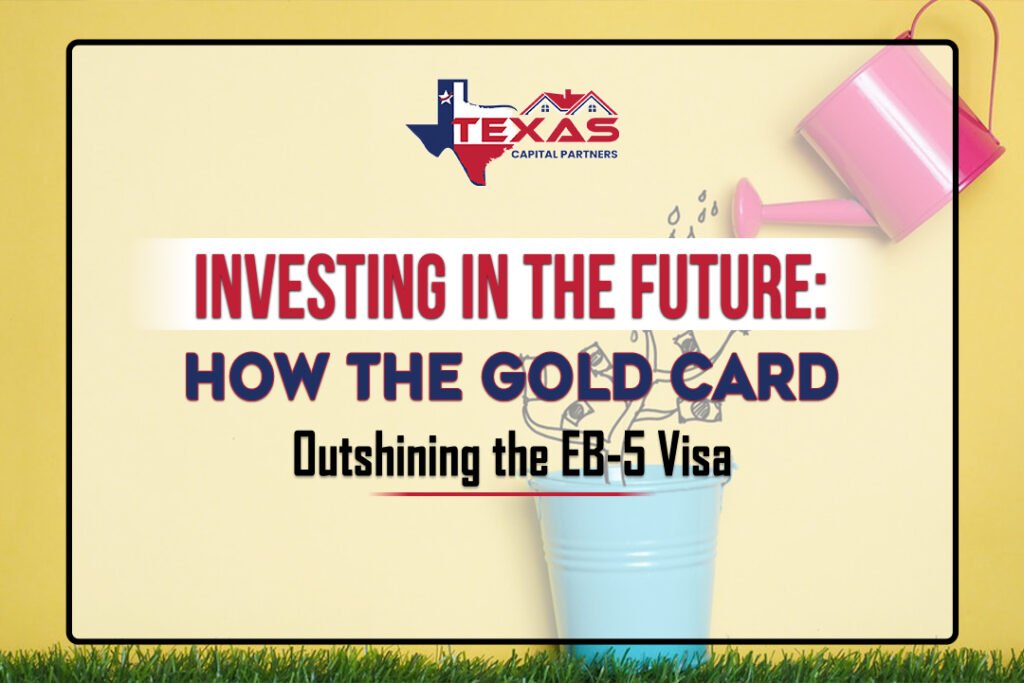In today’s global landscape, investors are seeking more than just returns—they’re looking for opportunities that offer security, mobility, and a promising future for their families. Traditionally, the U.S. EB-5 Immigrant Investor Program has been a popular route for obtaining permanent residency through investment. However, a new contender—the Gold Card—is rapidly gaining traction and is being viewed as a more attractive alternative by many international investors.
This article offers a side-by-side comparison of the EB-5 Visa and the Gold Card, analyzing the investment requirements, timelines, and benefits of each. Whether you’re a seasoned investor or exploring residency-by-investment options for the first time, understanding how the Gold Card is redefining the landscape can help you make a strategic, future-focused decision.
Section 1: Overview of the EB-5 Visa Program
The EB-5 Visa is a U.S. immigration program launched in 1990 by the Immigration Act. It allows foreign investors to obtain a green card by making a qualifying investment in a U.S. business that creates at least 10 full-time jobs for American workers.
Key Requirements:
- Investment Amount:
- $800,000 in a Targeted Employment Area
- $1.05 million in a non-TEA area
- $800,000 in a Targeted Employment Area
- Job Creation: Minimum of 10 full-time U.S. jobs
- Processing Time: Typically 24 to 36 months, but can take longer due to backlogs
- Residency: Grants conditional permanent residency for two years, after which the investor must apply to remove conditions
While the EB-5 Visa provides a direct path to permanent residency, it often involves high capital risk, long processing times, and strict job creation requirements that can complicate the investment process.
Section 2: Overview of the Gold Card Program
The Gold Card, often associated with Taiwan’s employment-based residency program, is a hybrid permit that combines a work visa, residence permit, and open work rights. Initially aimed at attracting high-skilled professionals, it has been expanded to include foreign investors, entrepreneurs, and business professionals.
Key Features of the Gold Card:
- Eligibility: Entrepreneurs, investors, skilled professionals in fields such as finance, tech, science, arts, and education
- Investment Requirements:
- Varies by category, but generally lower than EB-5
- Investors may qualify through direct investment, startup establishment, or capital contribution
- Varies by category, but generally lower than EB-5
- Processing Time: As little as 3 to 6 months
- Validity: Issued for up to 3 years, with the option to extend and apply for permanent residency
- Family Benefits: Includes spouse and dependents, with access to healthcare, education, and work opportunities
The Gold Card is particularly attractive for those seeking greater flexibility, lower upfront investment, and a faster path to residency.
Section 3: EB-5 vs. Gold Card — A Comparative Analysis
To better understand the appeal of the Gold Card, here’s a side-by-side comparison with the EB-5 Visa:
| Feature | EB-5 Visa (U.S.) | Gold Card (Taiwan) |
| Minimum Investment | $800,000 – $1.05 million | Lower (varies by business category) |
| Processing Time | 24–36 months (or longer) | 3–6 months |
| Residency Status | Conditional Green Card | Residency + Open Work Permit |
| Job Creation Requirement | Yes (10 full-time jobs) | No fixed job creation mandate |
| Family Inclusion | Yes (spouse + unmarried children) | Yes (spouse + children) |
| Path to Citizenship | After 5+ years | Eligible after 5 years |
| Business Flexibility | Investment tied to project | Start a business or work freely |
| Risk Level | Higher (project success matters) | Lower (no job creation condition) |
Benefits of the Gold Card Over EB-5
1. Lower Investment Threshold
Gold Card eligibility does not require millions in capital. Many investors qualify with smaller-scale business investments or entrepreneurial ventures, making it more accessible to a wider range of professionals.
2. Faster Processing Times
While EB-5 investors can wait years due to U.S. immigration backlogs, the Gold Card’s streamlined process allows applicants to obtain residency in as little as 3 months.
3. Greater Flexibility
Gold Card holders can live, work, or establish a business without restrictions tied to a single project. The card also provides freedom to change jobs, start ventures, or consult, which is not an option under EB-5’s strict job creation rules.
4. Family-Friendly Provisions
Spouses can work freely, and children gain access to public schools and health insurance—benefits comparable to those of green card holders in the U.S.
5. Lower Risk Profile
With no job creation condition and no dependence on a single business project’s success, the Gold Card presents a less risky option, especially for families or first-time investors.
Section 4: Conclusion
As global mobility and cross-border investment continue to evolve, smart investors are looking beyond traditional immigration routes like the EB-5 Visa. The Gold Card offers a modern alternative: faster processing, lower investment, greater flexibility, and a family-focused approach to residency.
For those seeking to build a future abroad with less complexity and more opportunity, the Gold Card is quickly emerging as the superior choice. Whether you’re planning to launch a business, secure better education for your children, or simply expand your global presence—the Gold Card offers the freedom and potential to do it all.
Invest in a future that works for you—and your family. The Gold Card is more than a visa; it’s a gateway to possibility.



